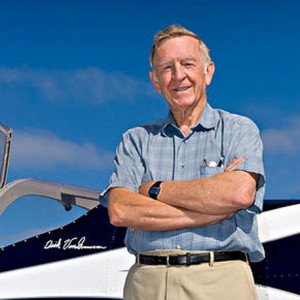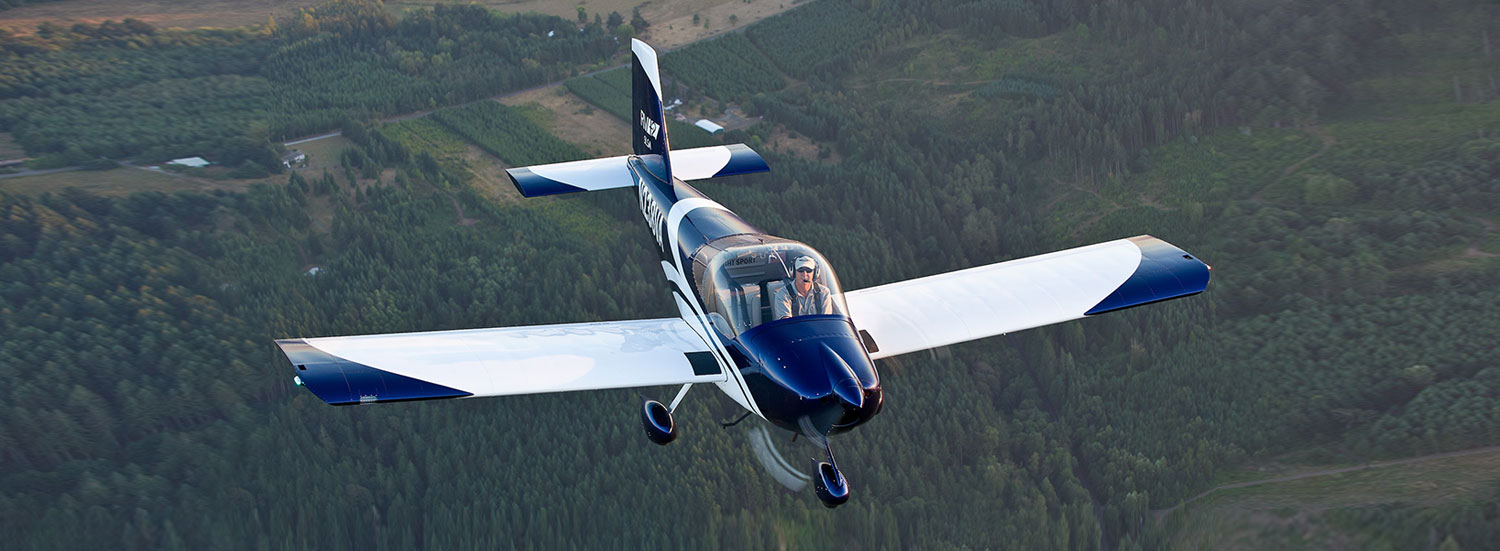HISTORY
Dick VanGrunsven, aka Van, has quietly become one of the most successful aircraft designers in the history of American aviation. Others have given more interviews, put out more press releases and received more publicity–but very few have as many airplanes flying. Today, over 8500 RV builders have reported their first flights to Van’s Aircraft (and there are no doubt hundreds more flying who haven’t sent in their “baby pictures”) and new airplanes take to the air on the average of 1.5 times per DAY!

The ultimate expression of a fuel efficient, low drag airplane is the modern sailplane… so its no surprise that Van is an avid and skilled sailplane pilot. High performance sailplanes are rather specialized and expensive, and there are relatively few pilots who want one. Realizing that, Van turned his thoughts toward a simple, light and efficient powered airplane with performance that fell in the range that most private pilots found useful. A new generation of aircraft engines was on the horizon, promising very light weights while still producing useful amounts of power. By using one, he could seat the occupants well forward of the wing, giving them excellent visibility in all directions including almost directly down. By working hard to keep the airplane small, clean and light, the smaller engines could generate speeds at least as good (and probably better) than that of common production airplanes and do it on significantly less fuel.
He worked out his ideas on a small scale model, hand-carved from a piece of firewood. The result was a slightly pug-nosed side-by-side airplane with a “cab-forward” design, a simple constant-chord wing and tricycle landing gear. Painted a hideous tennis-ball green, the model adorned his desk/drafting board for several years.
Finally, a confluence of events pushed him to go ahead with the development of the new idea now labeled (in a fit of originality) the RV-12.
The FAA approved the Light Sport Aircraft Category, allowing aircraft that met certain performance and weight specifications to be certified with less effort and expense. The new rules fit the RV-12 like a glove.
The success of the other RV designs had allowed Van’s Aircraft to expand and acquire modern computer controlled manufacturing and design equipment. The result was extremely accurate parts that could be produced economically, even in low volumes.
Light aircraft engines like the Rotax 912 had matured into mainstream powerplants and were proven in widespread use around the world.
A proof-of-concept prototype aircraft was constructed and test-flown extensively. It did its job, exposing both the good and bad points of ideas incorporated into it: pilots liked the Rotax engine and loved the visibility. Nobody liked the single hand-brake. Refinements and changes were made during an extensive test flight program.
When the RV-12 appeared in its final form, it was marketed as a very, very complete kit. The package included the engine, propeller, and avionics. Wiring harnesses, hoses and every other part were supplied. Besides making the airplane extremely easy for the homebuilder, this level of prefabrication helped achieve another aim–a finished, fly-away RV-12.
The same things that made the kit RV-12 so popular–a standardized airframe with inexpensive parts, easy construction–would help keep the price of the finished product affordable. The airplane would appeal to individuals who were not interested in building and flight schools that needed to operate certified airplanes. Van also envisioned the RV-12 as the backbone of flying clubs—affordable to buy, economical to operate, fun to fly. It should be easy to find partners for an airplane like that!
The RV-12 is a rare bird: a Light Sport Aircraft designed, manufactured and assembled in America. We hope that it will be flown in countries all over the world!
